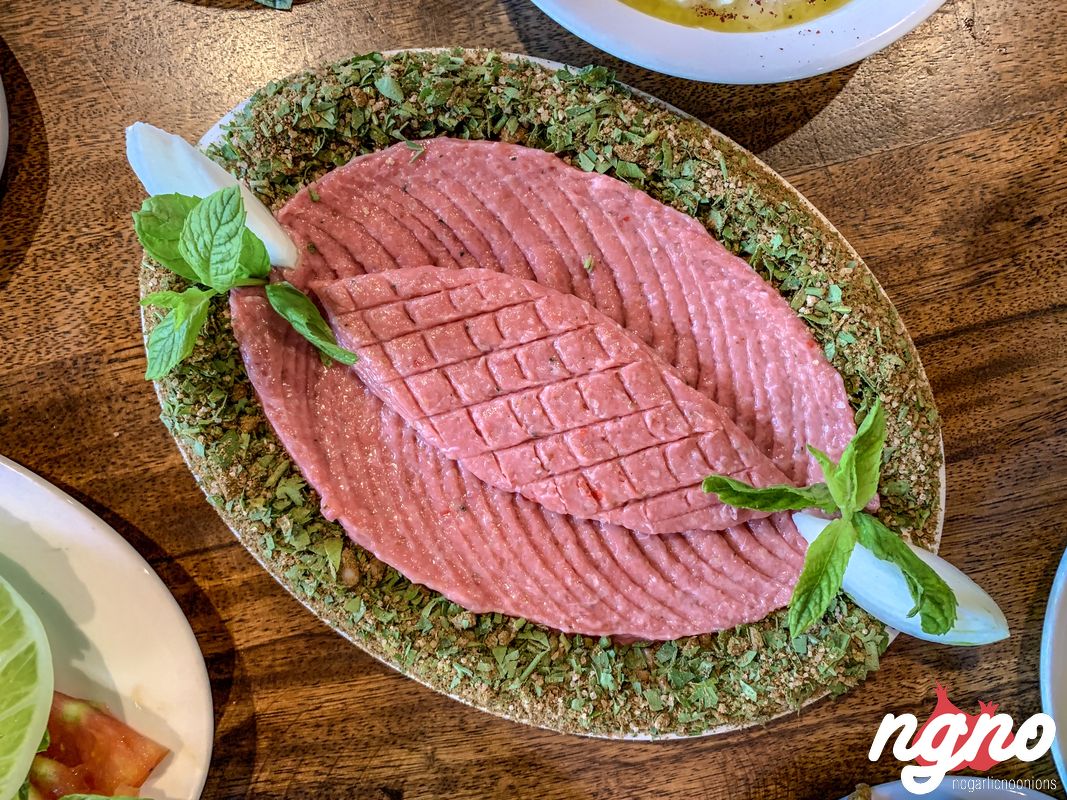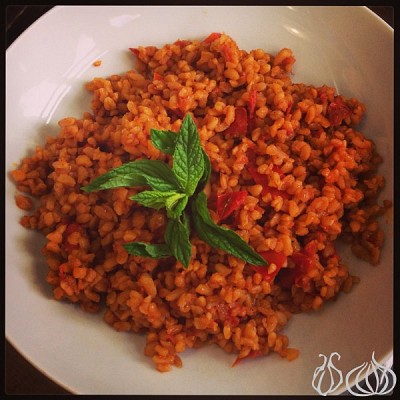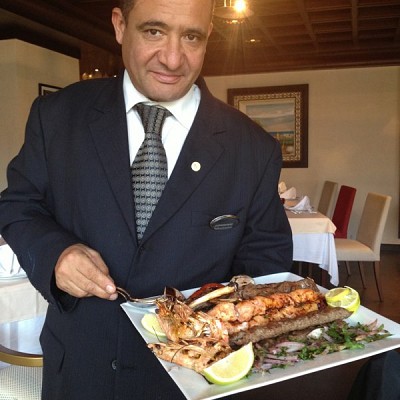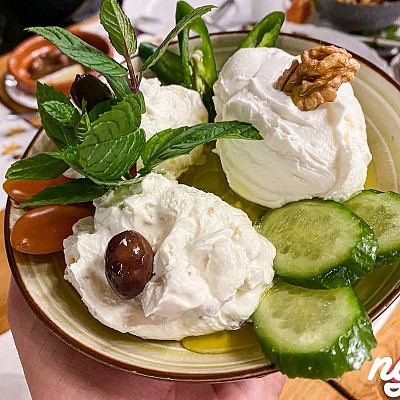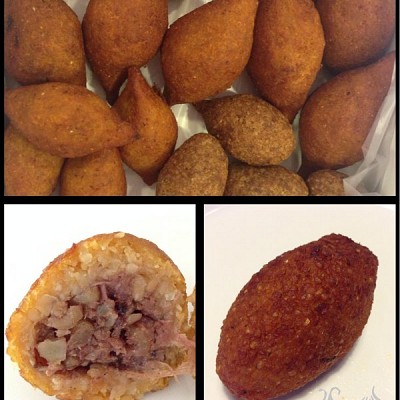It’s 6 am on a beautiful Sunday morning, and Suzanne is up and full of energy. She’s excited to start cooking for the family who will be joining her for lunch, as they do every Sunday. Sundays are often a day for get-togethers in Lebanon and even more so in Zgharta, in the north of the country.
Speaking of Zgharta, this village is one of the few, if not the only one, known for its ‘Afran el Kebbe’- kebbeh bakeries.
Manakish bakeries are common across Lebanon, and they make delicious “Manoucheh” every day, but in Zgharta you will find three kebbeh bakeries. Kebbeh in different sizes and shapes, cooked with passion, and skill by the local bakers.
Kebbeh is a meal served at every table, and when you say kebbeh, you automatically think of Zgharta. Lunch is never complete without kebbeh on the table. Think of it as serving coffee with dinner.
What makes Zgharta's kebbeh unique is the goat meat they use for the filling, the fact that the oil covers it completely while it is baking, and the high temperature fuel-fired ovens they use.
Back to Suzanne… She walks into her kitchen, turns on the lights and starts working on her kebbeh; she has a lot of work ahead and has to go fast because the dishes aren’t baked at home.
Suzanne's husband likes it with meat, her daughter with onions, her parents flat and toasted... she has to prepare something for everyone. After making the kebbeh with goat meat, bulgur and spices, it's time to spread it in different ways.
Taking the big tray, she starts preparing the different kinds of kebbeh, Zgharta, and the Ehden region up in the north of Lebanon are famed for.
The first one has a layer of meat and meat alone. "Kebbeh bel Saniyeh," the popular variation known in every Lebanese home. It is made of a layer of meat, covered with a layer of minced meat, and topped with a third layer of kebbeh. The final product looks like a sandwich. Another kind, known in Zgharta, is only made of one layer, creating a crunchy dish that looks and feels like a giant biscuit. It's best enjoyed with a taste of hummus or cold "labneh baladiyeh." (Kebbeh is made of minced meat and bulgur wheat with a mix of spices).
After making her layer of meat, she covers it with a centimeter of oil and puts it aside. The second kibbeh is called "Kebbeh bel Bassal" - Kebbeh with onions. While it looks like its siblings, kebbeh with onions is made of a layer of cooked onions mixed with pine nuts, covered with one layer of kebbeh meat. After baking, the pieces are turned upside down for you to see the kebbeh and onions on top. One without minced meat, one with minced meat, one with onions and a fourth with labneh. Imagine a three-layered sandwich - meat, labneh, and meat on top; I like to call it "The kebbeh club sandwich."
Shaped and carved with love, the top of every tray looks like a painting. Some like to draw lines with a knife, others use a fork, others turn them around with a spoon. The kebbeh drawings are like a unique signature that can tell us who made them.
The story is just at its beginning: "Kebbeh b Cha7meh" is a must! Round balls of kebbeh stuffed with ghee and minced meat, aromatized with herbs, and ready to be set on a tray, floating on a pool of oil. Anything leftover is used to create a large, hollow olive-shaped kibbeh ball. This big ball- shapes like a rounded hand, will be layered on the trays to create a marker. Opened and stuffed with tabbouleh, this creation is irresistible.
It was already noon. Time is running out; the guests will be arriving any minute
Helped by her husband, they prepare the car, covering the trunk with some cartons -protecting it from spilled oil- they put the kebbeh in and drive up the road to the bakery.
"Good morning Joseph, Suzanne shouts out loud, I have six trays, and I need them baked at once." Silence... it's like a pin was dropped... the only noise is the sound of the oven... Looking around, a handful of people are also waiting for their kebbeh. "It's Sunday; she bubbled with a shy voice; I almost forgot." Sunday is the day in Zgharta, it's a festive day, it's the family day... it's "Kebbeh Day."
Joseph takes them, marks them, throws them in the oven, and starts pushing them in a circle like a band of marching soldiers. The oil starts heating and boiling cooking the kebbeh from below. Every tray needs up to five minutes to cook. Joseph and his family have been serving the community for a hundred years or so with a bakery in Zgharta and another in Ehden. Experts at their craft, they are the guardians of a tradition. Joseph knows who's the best cook in the town... and he knows which household prepares the best kebbeh.
Bite into the thick, crunchy kebbeh cooked at high-temperature and bathing in oil. With its crunchy borders and tender heart, condensed and juicy, it's an explosion of pleasant textures. Grab it with two fingers, dip it in cold labneh, and enjoy one great feeling that will draw a smile on your face; it's like eating "Knefeh bel ashta". Imagine a thin layer of crunchy kebbeh, a thick load of creamy labneh, and more kebbeh. With two fingers, bite into it, enjoy it, feel the acidity, the richness of the meat and the oil pleasantly caressing your tongue.
Best for last; "Kebbeh b Cha7meh". I can tell you that people in Zgharta-Ehden know the meaning of happiness. Every night during the summer, they gather in Ehden -a village famed as a summer destination-, and enjoy Kebbeh, ghee, "liyyeh" - belly fat from a lamb-, Lebanese mezze, and Arak. This where that unique kebbeh is celebrated, cut down the middle, pieces are taken from the upper part, dipped in hot ghee, and enjoyed. Add hummus to double the pleasure.
Meanwhile, in Tyre, Zaynab is expecting friends from Beirut at dinner; she wants to please and impress them. "Kebbeh Nayyeh" is on the menu, among other local specialties. kebbeh has been developed in Lebanon through the ages, and each village will tell you that theirs is perfect, and the variations can be very different from one another. Down south, a mix of spices and herbs called "Kammouneh" gives kebbeh its distinctive signature flavor and red color. Kammouneh contains black pepper, cinnamon, spices, cumin, and seven spices mix, among others.
Enjoy a gooey mix with hints of crunchy bits of bulgur while a kick of spiciness comes to enchant the experience. Eat them with your hand, no bread needed after giving them a bath of olive oil. The raw kebbeh down south differs so much from the one up north. It's spicy, aromatic, and rich in flavor and textures. Traditional kebbeh is pure, smooth, and usually better enjoyed with Lebanese bread.
"Kebbeh b Cha7me", "Kebbeh bel Sanniyeh", "Kebbeh 2rass", "Kebbeh bel Bassal", "Kebbet La2teen", "Kebbeh 7ileh", "Kebbeh 2rass", "Kebbeht Labneh", "Kebbet Batata", "Kebbeh Nayyeh", "Kebbeh Sajiyyeh", "Kebbet Jreesh", "Kebbet Rezz", "Kebbet 7ommos", "Kebbet Samak" the list goes on and on. Then there are Kebbeh like "Kebbeh 2arnabiyyeh", "Kebbeh Samakieh", Kebbeh Labniyyeh", "Kebbeh bel Karaz”, “Kebbeh b Kechek” and others.
Kebbeh: A national love story, the pride of our culinary culture. In all its forms and shapes, kebbeh is simply marvelous. Next time you're in Lebanon, make sure to try the different varieties, especially with Labneh and Kammouneh.


















